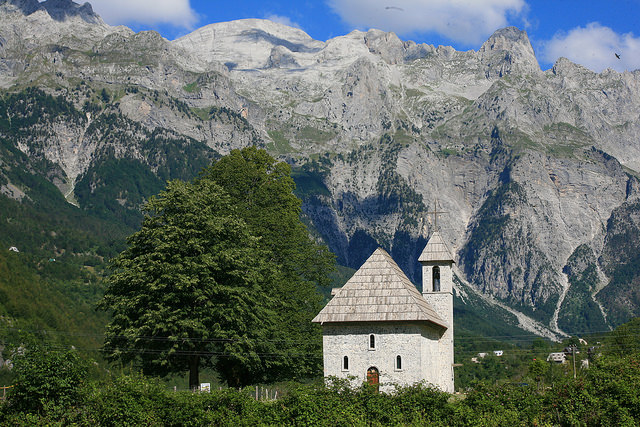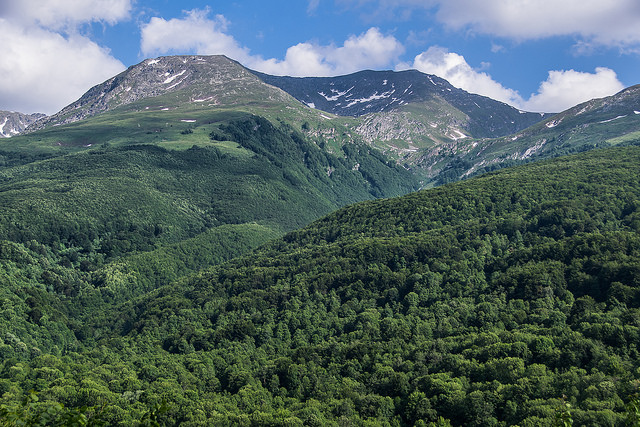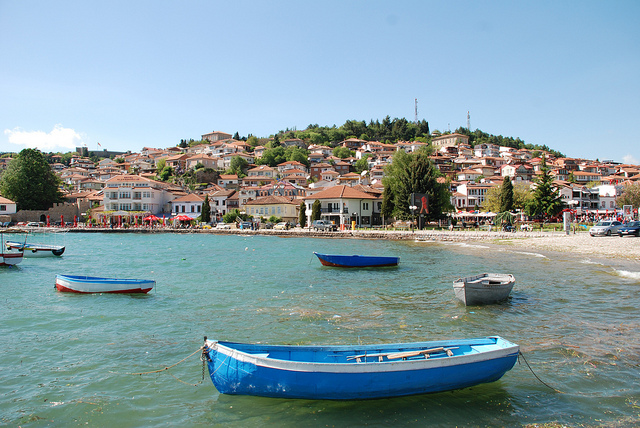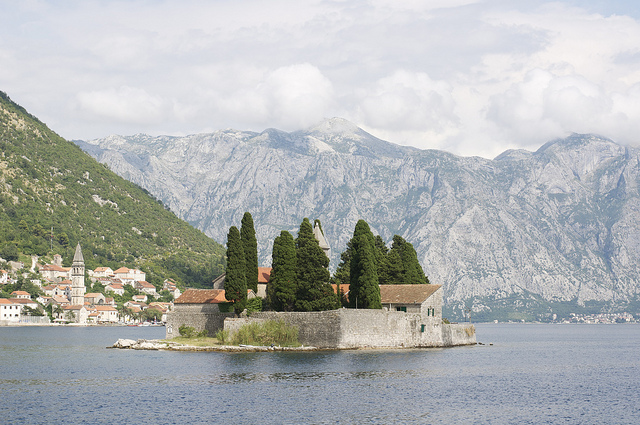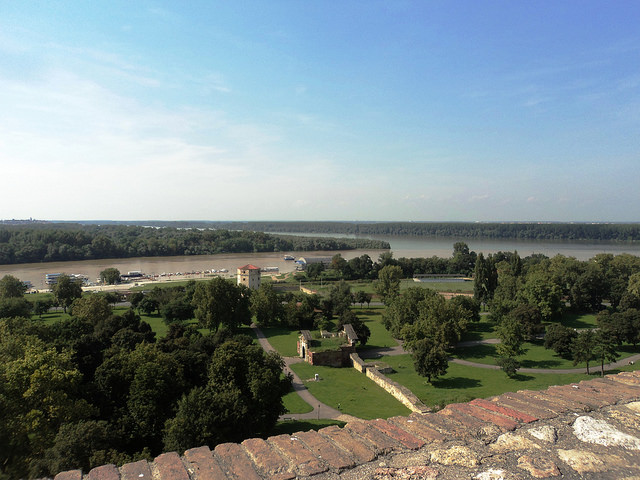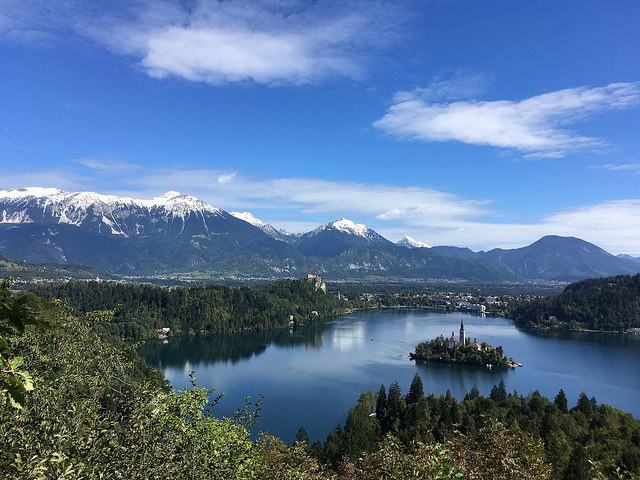The Balkans, an area in southeastern Europe along the Adriatic Sea, have been the crossroads of East and West for centuries. Fallen empires such as the Ottomans, Habsburgs, and Socialist Yugoslavia once claimed sections of the peninsula, and as such, political upheaval and wars -- including, more recently, the Croatian War of Independence, the Bosnian War, and the Kosovo War in the 1990s -- have long defined the region. Scars from the region's tumultuous past are still visible, but conflict has been quelled and all of the Balkan states are experiencing substantial progress, with many on their way to joining the European Union (Bulgaria, Slovenia, and Croatia have already been granted membership). Tourism greatly varies in the region, with yacht and resort destinations like Croatia and Montenegro rapidly growing, while some of the landlocked mountainous countries still remain under-the-radar for most travelers. To be clear, there isn’t a universal consensus on the exact borders of the Balkan region, so we’ve chosen here to describe the often-included countries with a significant political or cultural connection, leaving out some of the debatable ones, like Greece and Romania. Read on for our guide to each country.
Notice: Undefined offset: 4 in /nas/content/live/stagingstmllc/wp-content/plugins/smartertravel-shared/includes/ads/includes/api.php on line 92
Notice: Undefined offset: 5 in /nas/content/live/stagingstmllc/wp-content/plugins/smartertravel-shared/includes/ads/includes/api.php on line 92
Notice: Undefined offset: 6 in /nas/content/live/stagingstmllc/wp-content/plugins/smartertravel-shared/includes/ads/includes/api.php on line 92
Notice: Undefined offset: 4 in /nas/content/live/stagingstmllc/wp-content/plugins/smartertravel-shared/includes/ads/includes/api.php on line 98
Notice: Undefined index: pass_through_args in /nas/content/live/stagingstmllc/wp-content/plugins/smartertravel-shared/includes/ads/includes/api.php on line 158
Notice: Undefined index: wrapper in /nas/content/live/stagingstmllc/wp-content/plugins/smartertravel-shared/includes/ads/includes/api.php on line 159
Notice: Undefined offset: 4 in /nas/content/live/stagingstmllc/wp-content/plugins/smartertravel-shared/includes/ads/includes/api.php on line 92
Notice: Undefined offset: 5 in /nas/content/live/stagingstmllc/wp-content/plugins/smartertravel-shared/includes/ads/includes/api.php on line 92
Notice: Undefined offset: 6 in /nas/content/live/stagingstmllc/wp-content/plugins/smartertravel-shared/includes/ads/includes/api.php on line 92
Notice: Undefined offset: 4 in /nas/content/live/stagingstmllc/wp-content/plugins/smartertravel-shared/includes/ads/includes/api.php on line 98
Notice: Undefined index: pass_through_args in /nas/content/live/stagingstmllc/wp-content/plugins/smartertravel-shared/includes/ads/includes/api.php on line 158
Notice: Undefined index: wrapper in /nas/content/live/stagingstmllc/wp-content/plugins/smartertravel-shared/includes/ads/includes/api.php on line 159
Notice: Undefined offset: 4 in /nas/content/live/stagingstmllc/wp-content/plugins/smartertravel-shared/includes/ads/includes/api.php on line 92
Notice: Undefined offset: 5 in /nas/content/live/stagingstmllc/wp-content/plugins/smartertravel-shared/includes/ads/includes/api.php on line 92
Notice: Undefined offset: 6 in /nas/content/live/stagingstmllc/wp-content/plugins/smartertravel-shared/includes/ads/includes/api.php on line 92
Notice: Undefined offset: 4 in /nas/content/live/stagingstmllc/wp-content/plugins/smartertravel-shared/includes/ads/includes/api.php on line 98
Notice: Undefined index: pass_through_args in /nas/content/live/stagingstmllc/wp-content/plugins/smartertravel-shared/includes/ads/includes/api.php on line 158
Notice: Undefined index: wrapper in /nas/content/live/stagingstmllc/wp-content/plugins/smartertravel-shared/includes/ads/includes/api.php on line 159
Notice: Undefined offset: 4 in /nas/content/live/stagingstmllc/wp-content/plugins/smartertravel-shared/includes/ads/includes/api.php on line 92
Notice: Undefined offset: 5 in /nas/content/live/stagingstmllc/wp-content/plugins/smartertravel-shared/includes/ads/includes/api.php on line 92
Notice: Undefined offset: 6 in /nas/content/live/stagingstmllc/wp-content/plugins/smartertravel-shared/includes/ads/includes/api.php on line 92
Notice: Undefined offset: 4 in /nas/content/live/stagingstmllc/wp-content/plugins/smartertravel-shared/includes/ads/includes/api.php on line 98
Notice: Undefined index: pass_through_args in /nas/content/live/stagingstmllc/wp-content/plugins/smartertravel-shared/includes/ads/includes/api.php on line 158
Notice: Undefined index: wrapper in /nas/content/live/stagingstmllc/wp-content/plugins/smartertravel-shared/includes/ads/includes/api.php on line 159
Notice: Undefined offset: 4 in /nas/content/live/stagingstmllc/wp-content/plugins/smartertravel-shared/includes/ads/includes/api.php on line 92
Notice: Undefined offset: 5 in /nas/content/live/stagingstmllc/wp-content/plugins/smartertravel-shared/includes/ads/includes/api.php on line 92
Notice: Undefined offset: 6 in /nas/content/live/stagingstmllc/wp-content/plugins/smartertravel-shared/includes/ads/includes/api.php on line 92
Notice: Undefined offset: 4 in /nas/content/live/stagingstmllc/wp-content/plugins/smartertravel-shared/includes/ads/includes/api.php on line 98
Notice: Undefined index: pass_through_args in /nas/content/live/stagingstmllc/wp-content/plugins/smartertravel-shared/includes/ads/includes/api.php on line 158
Notice: Undefined index: wrapper in /nas/content/live/stagingstmllc/wp-content/plugins/smartertravel-shared/includes/ads/includes/api.php on line 159
Albania
Albania, long isolated from most of the world by Stalinist-style communism, began its reemergence following a democratic transition of power in 1992. The transition was far from smooth with a government collapse in 1997, which gives some explanation as to why Albania has lagged behind nearby tourism hotspots Croatia and Greece. Today, visitors can enjoy the compact nation’s array of mountain villages, beaches, and a surprisingly vibrant capital city, Tirana. Tirana is the main point of entry by flight or affordable bus connections from neighboring countries. For nightlife, the Blloku neighborhood is where you’ll find hip Albanians dining and drinking at the trendier bars and cafes. Tirana is home to numerous Communist relics, mosques, and museums, but a less conspicuous attraction awaits below ground at Bunk’Art. This dual gallery and museum sits in a five-story subterranean bunker that was designed for Enver Hoxha, Albania’s former communist leader. There is more to Albania than its capital, so ditch the congested city streets for a trip to one of Albania’s stunning stretches of coastline, notably at Dhërmi, Ksamil, and Himara.
Bosnia and Herzegovina
View from the Minaret; Kevin Botto/Flickr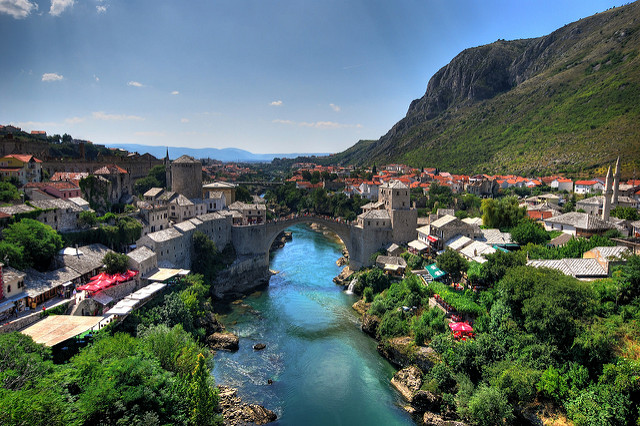
The Bosnian people suffered the most after the breakup of Yugoslavia and the subsequent civil war. The nation’s declaration of independence in 1992 triggered conflict between different ethnic groups, which led to bombing cities, ethnic cleansing, and the loss of over 100,000 lives before UN intervention and peace negotiations brought the war to an end in 1995. Despite this very recent conflict, Bosnia and Herzegovina is emerging again as a tourist destination – the capital, Sarajevo, was well-known for hosting the 1984 Winter Olympics. In fact, the abandoned bobsled run makes for a unique day-trip, but be sure to stick to the graffiti-filled concrete track, which snakes through the trees up the mountain.
Bosnia and Herzegovina’s complicated past predates the civil war in the 1990s, though today, the country is significantly more stable. Having been under both Ottoman and Austro-Hungarian rule, the country is home to a combination of Eastern and Western traditions. A short stroll through the cobbled streets of Old Town could easily lead past churches, mosques, and a synagogue within a stone’s throw of each other. Take a break from your itinerary and relax like locals with a Bosnian-style coffee (similar to Turkish-style) at one of the numerous street-side cafes. A visit to the History Museum of Bosnia and Herzegovina gives some insight into the recent conflict — don’t be fooled by the shabby building exterior.
The country may only have 12 miles of coastline, but the inland rivers, waterfalls, and mountains more than compensate for this. The stunning cascades at Kravica and Jajce are well worth the trip. Kravica is more isolated and allows swimming, while Jajce is scenically situated just beside a charming town and fortress of the same name. The particularly daring can take a plunge into the Neretva from Stari Most bridge above in the town of Mostar. Local divers make it look easy, but the bridge is a daunting 65 feet above the chilly river. For some tamer thrills, other sections of the Neretva and other rivers offer excellent rafting and kayaking.
Bulgaria
Yantra River; Dennis Jarvis/Flickr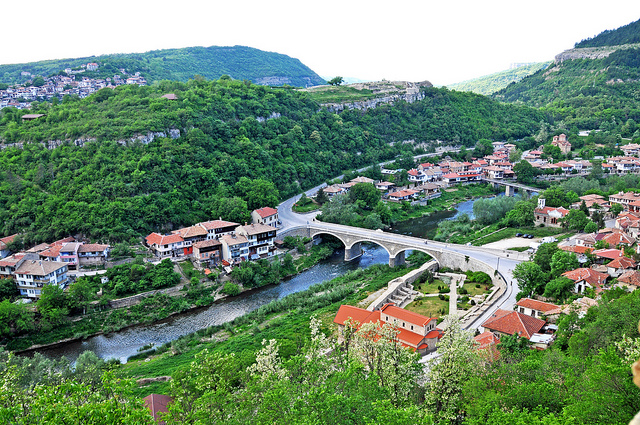
Bulgaria joined the EU in 2007, but has yet to draw significant tourism outside of those heading to the Black Sea’s shore or seeking discount ski holidays in Bansko. Although relaxing at affordable seaside resorts and skiing the Pirin Mountains are remarkable experiences, Bulgaria has plenty more to offer. The capital, Sofia, isn’t exactly an architectural marvel, but it does have a handful of domed orthodox churches, Ottoman-era mosques, and communist-era monuments that give the city character. For a deeper look at what Sofia looked like under communist rule, head to the Museum of Socialist Art, which includes a sculpture garden of grand busts of communist leaders, a painting gallery, and film screenings.
In Central Bulgaria, lies Plovdiv, Europe’s oldest continuously inhabited city. Visitors can marvel at ancient walls and amphitheaters intermixed with modern city life. The charming old town, music festivals, and brightly colored old mansions will soon be drawing more crowds, as this seven-hilled city is set to be a European Capital of Culture in 2019.
Away from the big cities, Bulgaria’s seven mountain ranges are still home to remarkable wildlife, such as bears, lynx, and wolves. Hikers shouldn’t be deterred by these furry critters while hiking Bulgaria’s thick forests and high peaks. If your idea of the outdoors involves sand over blisters, Bulgaria’s Black Sea coast provides both resorts and empty stretches of beach. Varna and Burgas are the main draw points for festivals and nightlife, whereas Standzha Nature Park promises more solitude.
A Luxury Hotel Pick:
Croatia
View from the Aminess Lume Hotel/Oyster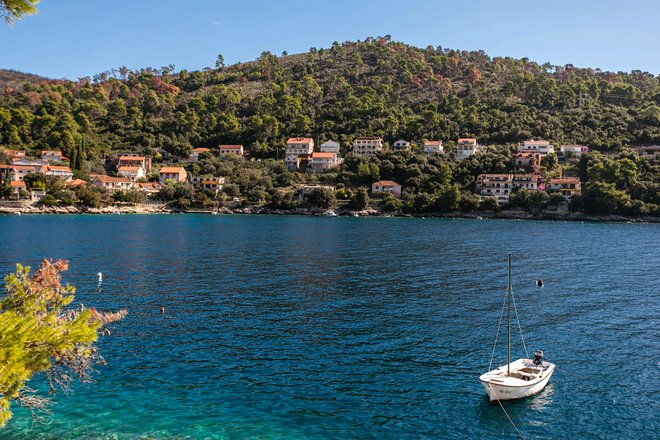
Following the dissolution of Yugoslavia and the end of the Bosnian War, Croatia opened itself to tourism and today is thriving. Most visitors make a beeline for the coastal town of Dubrovnik on their way to gorgeous islands. The Dalmatian Coast and Adriatic Sea merit exploration, but inland attractions abound as well. Croatia’s capital, Zagreb, is often overlooked. The underrated capital has a medieval quarter that rivals Prague or Budapest, along with plentiful cathedrals and a vibrant cafe scene. The arts scene is alive and well with numerous galleries and museums, but a unique museum experience awaits at the Museum of Broken Relationships. Another inland destination, albeit much more popular, is Plitvice Lakes National Park, a UNESCO World Heritage site. The park includes 16 lakes connected by small rivers and subterranean waterways. The unique formation of the lakes is the result of travertine dams, which are created through an accumulation of algae, bacteria, and moss deposits into barriers. Another stunning feature is the abundance of waterfalls leading from lake to lake, which can easily be explored by elevated walking paths.
Including Croatia’s 1,246 islands, the country has over 3,600 miles of coastline. The previously mentioned city of Dubrovnik draws large crowds to its Old Town, enclosed by ancient city walls. It can become seriously overcrowded in the summer with frequent cruise visits, but fortunately the city will soon be limiting visitation within the walls to 4,000 people per day. To the north, Split and Zadar offer a more relaxed setting in terms of crowds. Both cities’ old towns and Zadar’s sea organ, which harnesses the power of the Adriatic’s waves to play music, are worthy of a visit before embarking for the islands. Hvar, the most popular island, is known for its party scene and resorts, but there are also hidden coves and a hilltop fortress to be enjoyed on this 43-mile long island. Vis, the second farthest island from the mainland, is still only a 1.5-hour ferry from Split. The sparsely populated island’s beaches and coves are best explored by scooter, while the evening is best spent dining on fresh seafood and local wine at one of Komiza’s harbor side cafes.
A Luxury Hotel Pick:
Kosovo
Most nations consider Kosovo to be Europe’s newest country, but neighboring Serbia is not one of them. Kosovo officially declared independence from Serbia in 2008 following heavy conflict in the late ’90s. That conflict escalated in 1999 after NATO negotiations for peace failed, leading to a subsequent aggressive bombing campaign against the remaining Yugoslavian forces in Kosovo. When the UN failed to broker negotiations on granting EU-supervised protections for Kosovo under Serbian rule, Kosovo declared its outright independence.
Although this is all very recent history, Kosovo is now safe to visit. The small, mountainous nation is home to several national parks offering excellent hiking opportunities. Peja, a city just below the Bjeshket e Nemuna mountain, serves as a great base for exploring monasteries and some of Kosovo’s finest landscapes. Two of these monasteries, the Patriarchate of Peć and Dečani Monastery, are UNESCO World Heritage Sites. Nearby canyons and caves can easily be visited, most notably the gorges at Rugova Canyon and the cave systems at Gyrka a Madhe (Great Canyon), though it should be noted that visitors should enter the latter with a guide. Kosovo’s capital, Pristina, has enough museums, historic mosques, and cafe-side people watching to occupy a couple of days.
Beware that flying into Kosovo and then entering Serbia is not allowed by Serbian border control. It is advisable to go to Serbia first if you plan to visit both countries. Travel between the two is fine as long as Serbia is the point of entry going into Kosovo.
Macedonia
Macedonia gained its independence in 1991 from Yugoslavia, but like many other Balkan nations, it has fallen under different rules throughout its history, including Greek, Roman, and Ottoman, before the creation of Yugoslavia. As in Kosovo, the tourism infrastructure in Macedonia isn’t well established, making this relatively small, landlocked mountainous nation ideal for getting off the beaten track.
Skopje, the capital city, is often the first stop, unless you’re bussing in from a bordering country. An earthquake in 1963 devastated the city, destroying roughly 80 percent of it, but the city’s ancient history is still on display. Fortresses, century-old churches, mosques, and the Old Skopje Bazaar — the second largest outside of Istanbul — can all be easily visited during a short stay in Skopje. Greek, Turkish, and Balkan influences converge in Macedonia’s cuisine, so be sure to seek out some burek and kebapis (a cheese, spinach, or meat filled puff pastry and minced meat flatbread sandwiches respectively).
Ohrid, a charming city with red terracotta roofs and cafe-strewn cobblestone street, is nestled beside a serene crystal-clear lake of the same name. The city is easily walkable and is packed with churches and other historic sites, whose beauty is enhanced by the lakeside setting. Besides serving as a tranquil backdrop, it’s easily accessible for boating and swimming. Ohrid is quite popular with Macedonians, especially around the Ohrid Summer Festival, when thousands descend upon Ohrid for a month of musical performances and shows.
Montenegro
This rather new nation split from Serbia in 2006 and is currently negotiating EU membership. Despite being only the 161st largest nation, Montenegro borders five other countries and features peaks, canyons, superb beaches, gorgeous lakes, the substantial and scenic Bay of Kotor, and several national parks.
Montenegro’s 182 miles of coastline manages to pack quite the punch. Budva is the premier destination for nightlife and sandy beaches, but the Venetian-style old town still maintains a more relaxed atmosphere. The Budva City Museum and seaside citadel give some insight into the city’s pre-resort history. Farther south, Bar draws visitors for its old town, Stari Bar, which lies uphill from the new city, and what is believed to be the oldest olive tree in the world at 2,000 to 2,500 years old. This beautiful stone city is steeped in history, having passed from the Byzantine to the Venetians, and later the Ottomans before an explosion on the aqueduct left the city temporarily abandoned. The comparatively underrated Ulcinj and Herceg Novi both have delightful old towns and al fresco eateries serving up fresh seafood and local wine.
The Bay of Kotor, is one of the main draws to Montenegro, and it’s easy to see why. The Dinaric Alps quickly rise from the bay’s shore, giving the appearance of a fjord in the Mediterranean. The main town on the bay is conveniently named Kotor, which boasts UNESCO World Heritage status. Kotor is well fortified by old town walls, with entry gates only permitting foot traffic into its ancient cobblestoned streets. A long hike or drive from town will take you to Lovćen National Park, a Montenegrin treasure granting beautiful views of the bay below.
A Beachfront Hotel Pick:
Serbia
Although Serbia has been mentioned as a major player in much of the regional conflict, it is certainly a safe destination. Belgrade, the capital city, is arguably the most dynamic city in the Balkans, and contends with Berlin for its nightlife. Situated right on the Danube, Belgrade lacks the architectural prowess of upriver cities like Budapest and Vienna, but it compensates with liveliness. Klub 20/44 has a history that seems like it belongs in a Saturday Night Live sketch — once a former strip club, this independent hot spot is housed in a old ship on the Sava river, with frequent DJ and musical performances squeezed in between the still-intact stripper poles. A more relaxed evening can be had at Opservatorijum, a white-washed gallery space serving drinks and spinning vinyl. Other lively spots include Drugstore, KGB Caffe, and The Tube. Many clubs and bars change location frequently due to rather sketchy laws and corruption, so double-check your destination before heading out for the evening. Belgrade maintains some old-world charm too, with Ottoman influences, Habsburg history, and Art Nouveau buildings.
To the north, Novi Sad is best known for hosting the Exit music festival, which is held at the Petrovaradin fortress complex. The fortress, situated right on the Danube, contains a variety of spaces as well as boasts a history of never being conquered. Inside you’ll find a city museum, artists’ studios, galleries, clubs and cafes. Novi Sad is the capital of Vojvodina, an autonomous province of Serbia, home to over 25 ethnic groups. Outside of the city, monasteries and vineyards dot the hills around Fruška Gora National Park. Here, you’ll find an ideal getaway after a weekend of revelry in Belgrade.
Slovenia
By far the most developed nation on this list, Slovenia was spared most of the conflict following the breakup of Yugoslavia. The modestly sized capital, Ljubljana, was awarded the title Green Capital of Europe 2016 by the European Commission. The city prioritizes pedestrian walking spaces in the heart of the city, notably along the Ljubljanica River, which is filled with cafe. A large student population creates a lively nightlife and cultural scene, furthered by plenty of museums and exceptional architectural design.
Lake Bled’s fairytale setting in the Julian Alps has garnered the attention of many travelers. A church sits on an island at the center of the reflective lake, while medieval Bled Castle is perched on a northern shore cliff. Lake Bohinj, Slovenia’s largest lake, receives less attention, but rivals its famous neighbor in beauty. Framed by alpine peaks and surrounded by a mix of forest and farmland, Lake Bohinj is ideal for an outdoorsy vacation away from the crowds.
Slovenia’s tiny coastline is best experienced in the charming, red-roofed town of Piran. The town juts right out into the Adriatic, allowing sea views from three sides of town. Coming from the country’s interior, you might think you’ve crossed into Italy were it not for the distinct difference in Slovenian versus Italian tongues. Piran was part of the Venetian Empire for centuries, and it was under Italian rule from World War I until 1947. There isn’t a laundry list of “must do’s” here, but several days can be spent swimming off the pier, strolling the town squares, climbing the city walls, and exploring the rest of Slovenia’s modest, but beautiful, coastline.
A Luxury Hotel Pick:
You’ll Also Like:
- 17 Things You Need to Know About Croatia
- 8 Amazing Things to Do in Croatia
- 7 Underrated Mediterranean Destinations to Visit on Your Next Trip
All products are independently selected by our writers and editors. If you buy something through our links, Oyster may earn an affiliate commission.
